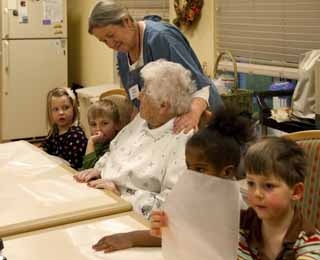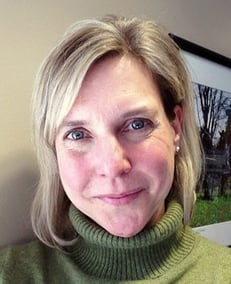Published: July 19, 2016

“When the wisdom of age is mixed with the energy of youth, it creates a powerful combination that benefits everyone”
- Donna Butts from Generations United
Over the years many have asked me the question, “How did you become interested in the field of nutrition?” I give credit to my grandfather, Steve. He often brought me to his kitchen table and introduced me to exotic foods like dates, macadamia nuts, and carob. He took me out to the garden and showed me his home grown tomatoes which tasted much better than their grocery store counterparts. He took a lot of pride and time in creating his homemade soups which were full of vegetables, little meat and tasted wonderful. He lived to be a healthy 99 years old.
My grandmother, on the other hand, was not as interested in the nutrition aspect of food but was a wonderful cook of Czech descent. She introduced me to goulash, stuffed cabbage, sauerkraut, and strudels. Although my grandparents were rather stoic people, their warmth came out through cooking and sharing meals together.
These experiences helped me to develop an interest in food and the role it plays in our overall health. It stimulated my interest in trying new and different cuisines.
Here at Kendal at Oberlin, I’m often amazed by the many ways our community blends its residents and daycare children in daily activities. They read together, play together, create art together, exercise together, garden and cook together. Cooking, in particular, includes all of these activities. The kids and residents are fascinated! There are no iPads or cell phones, just working and sharing. There is a great feeling of satisfaction and accomplishment when it is all over.
The cooking program on Mondays, Cooking With the Kids, is a wonderful experience. The residents are instructing the kids on how to read the read the recipes and follow instructions. The kids also learn math skills through measuring and the benefits of working together as a team. There are many stories exchanged about what families prepare at the holidays and what ingredients they used in their favorite cookies. One of our residents, a centenarian named Jean, talks about the Chinese dumpling she makes after living in China for a time with her missionary parents. She made these pork dumplings with her own children (she had six) and they would have Chinese potlucks with their neighbors here in Oberlin. The intergenerational class plans on preparing these dumplings in a future cooking class.
Although dessert-type of recipes is often the most popular in class, healthy recipes are often included. “Healthy snacks” were a specific class taught to the after school kids population.
According to data collected by the USDA’s Center of Nutrition Policy and Promotion, the dietary intake of whole fruits, green and orange vegetables and whole grains are often missing in the diets of children and seniors alike. For older adults, it may be a number of reasons such as lack of availability, poor dentition, or digestive problems that limit intakes. For children, the most common reason is their fear of trying new things. Programs that introduce kids to fruits and vegetables through gardening, cooking, and food tasting improve the whole food acceptance and intakes. It makes good sense to have programs that involve seniors modeling ideal consumption of whole foods to improve the nutritional intake of children.
An example of an easy, healthy recipe that is fun to make is Zucchini Parmesan Crisps by Ellie Krieger, RD.

Sue Campbell RD,LD





